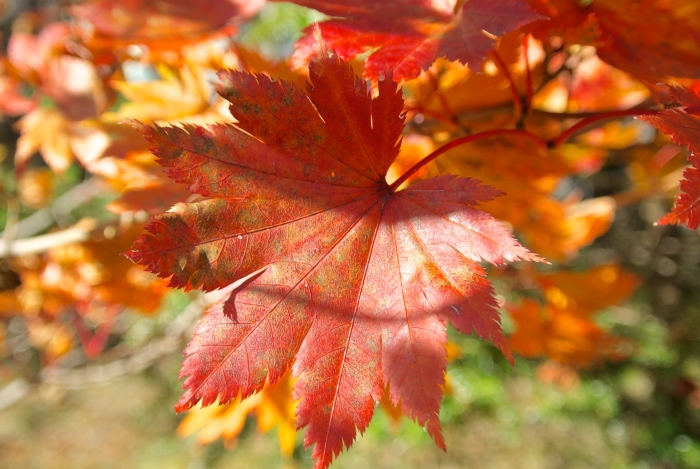Fullmoon Maple
(Acer japonicum)
Fullmoon Maple (Acer japonicum)
/
/

Koichi Oda
CC BY-SA 2.0
Image By:
Koichi Oda
Recorded By:
Copyright:
CC BY-SA 2.0
Copyright Notice:
Photo by: Koichi Oda | License Type: CC BY-SA 2.0 | License URL: https://creativecommons.org/licenses/by-sa/2.0 | Uploader: Josve05a | Publisher: Wikimedia Commons | Title: Acer_japonicum_-_Flickr_-_odako1_(1).jpg | Notes: == {{int:filedesc}} == {{Information |Description=Clematis armandii in the Ceanothus |Source=[https://www.flickr.com/photos/peganum/5687361919/ Clematis armandii in the Ceanothus] |Date=2011-05-04 17:00 |Author=[https://www.flickr.com/people/26698606@N.






























Estimated Native Range
Summary
Acer japonicum, commonly known as Fullmoon Maple, is a small deciduous tree or large shrub native to mountainous areas, forest edges, and riverbanks in Japan. It typically grows to 5–10 m tall, rarely reaching 15 m, with a trunk up to 40 cm in diameter. Often, it presents as a multi-stemmed shrub with trunks joining at ground level. The Fullmoon Maple is notable for its rounded leaves that resemble a full moon, particularly striking in the fall when they turn vibrant shades of red and orange. The flowers, which appear in early spring as the leaves unfurl, are dark purplish-red, 1 cm in diameter, and hang in drooping corymbs of 10–15. The fruit is a paired samara with 7 mm diameter nutlets and a 20–25 mm wing, hanging beneath the foliage.
This species is appreciated for its ornamental qualities, including its showy flowers and spectacular autumn coloration, making it a popular choice for garden and landscape use in temperate regions. It is used for border planting, as a specimen tree, and in Japanese-style gardens. Fullmoon Maple requires full sun to part shade, medium water, and well-drained soil to thrive. While it is generally low-maintenance, it can be susceptible to leaf scorch in hot, dry conditions and may require protection from strong winds.CC BY-SA 4.0
This species is appreciated for its ornamental qualities, including its showy flowers and spectacular autumn coloration, making it a popular choice for garden and landscape use in temperate regions. It is used for border planting, as a specimen tree, and in Japanese-style gardens. Fullmoon Maple requires full sun to part shade, medium water, and well-drained soil to thrive. While it is generally low-maintenance, it can be susceptible to leaf scorch in hot, dry conditions and may require protection from strong winds.CC BY-SA 4.0
Plant Description
- Plant Type: Tree
- Height: 20-30 feet
- Width: 20-30 feet
- Growth Rate: Slow
- Flower Color: N/A
- Flowering Season: Spring
- Leaf Retention: Deciduous
Growth Requirements
- Sun: Full Sun, Part Shade
- Water: Medium
- Drainage: Medium
Common Uses
Bee Garden, Bird Garden, Butterfly Garden, Deer Resistant, Low Maintenance, Rabbit Resistant, Street Planting
Natural Habitat
Mountainous areas, forest edges, and riverbanks in Japan and South Korea
Other Names
Common Names: Japanese Maple, Downy Japanese Maple, Full-Moon Maple, Japanischer Ahorn, Érable Du Japon, Solfjäderslönn, Hauchiwa-Kaede, Meigetsu-Kaede
Scientific Names: , Acer japonicum, Acer japonicum var. aconitifolium, Acer japonicum f. aconitifolium, Acer circumlobatum, Acer japonicum var. villosum, Acer insulare, Acer japonicum f. macrophyllum, Acer japonicum f. parsonsii, Acer japonicum var. insulare
GBIF Accepted Name: Acer japonicum Thunb.